One coconut palm produces about 75 coconuts every year. The majority of coconuts in my neighborhood end up in a pile of yard waste by the street. Most people don’t bother opening them because it’s too difficult or dangerous. Luckily my husband has picked up some techniques in his travels and he loves coconut water enough to be willing.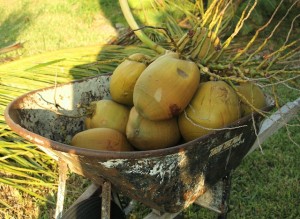
Young, green coconuts are a little easier to manage. They don’t have any meat; they’re mostly water and some jelly lining the inner shell. You can use a knife to take off the stem end and poke through the top of the shell, then drain the water from that hole.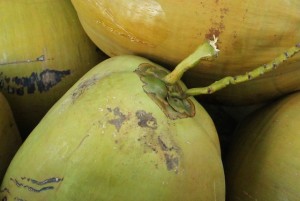
Mature coconuts are more difficult because the husk is hard and thick. But these contain coconut meat, and if they’re not too old, they usually have some water in them, too. For these you’ll need a sharp hatchet or machete to remove the outer husk. (Beware, this part can be dangerous.)
It’s best to lay the coconut on its side on a soft surface such as grass or mulch so the blade doesn’t hit concrete. Chop at an angle all the way around the top third of the coconut, through the husk but being careful not to crack the inner shell. Once you remove that top third of husk, exposing the top of the inner shell, stand it upright and puncture it. Turn the coconut upside down over a pitcher to drain the water.
Once you’ve drained the water, stand the coconut on the flat end you’ve created and continue to chop away the rest of the husk around the inner shell. Use the blade to crack the inner shell in half. Then use a butter knife to pry the meat away from the shell.
So if you’ve got coconuts, get cracking. I’ll post some fresh coconut recipes for you soon. In the mean time, here’s a coconut cardamom cocktail I can’t wait to try at stirandstrain.com.

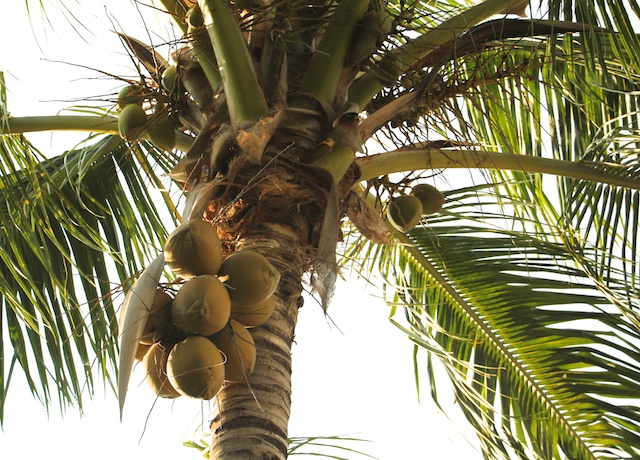
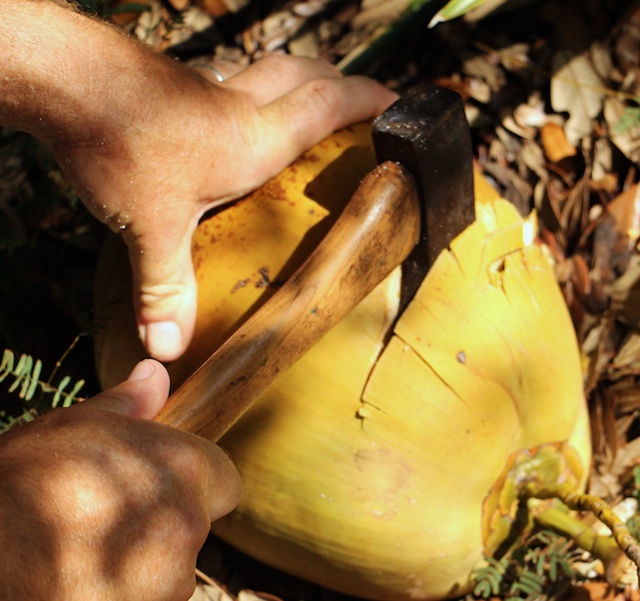
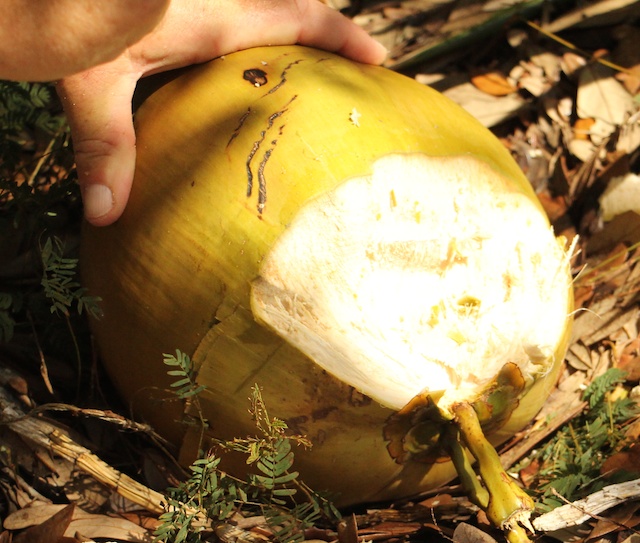
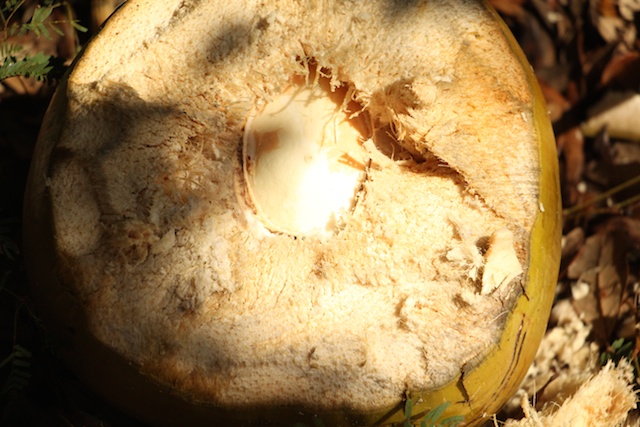
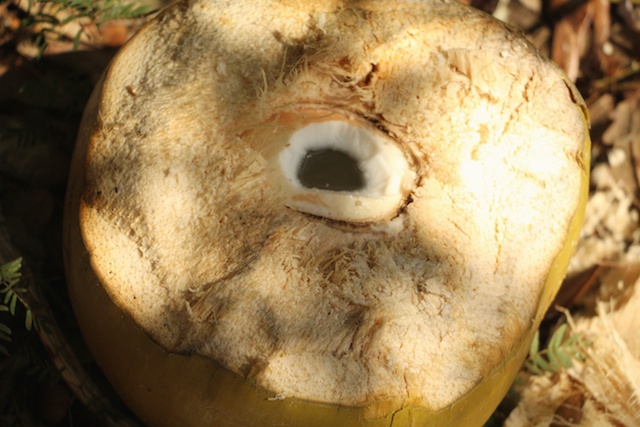
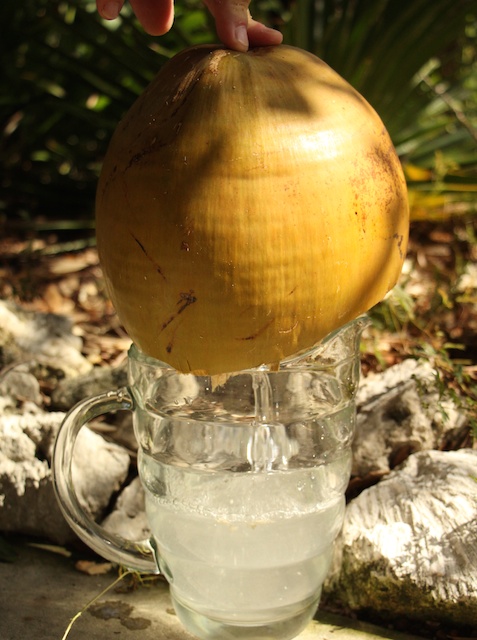
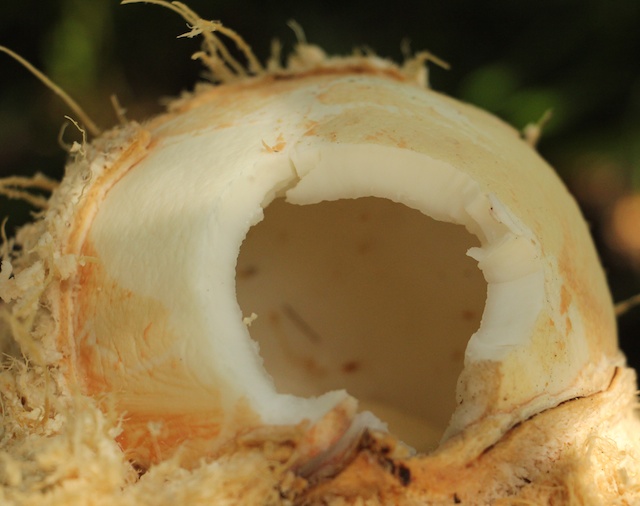




Pingback: Coconut Key Lime Ice | Suwannee Rose
Pingback: Fresh Coconut Milk and Flour | Suwannee Rose
Pingback: Thai Coconut Fish Cakes | Suwannee Rose